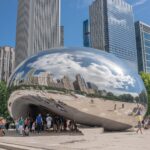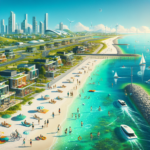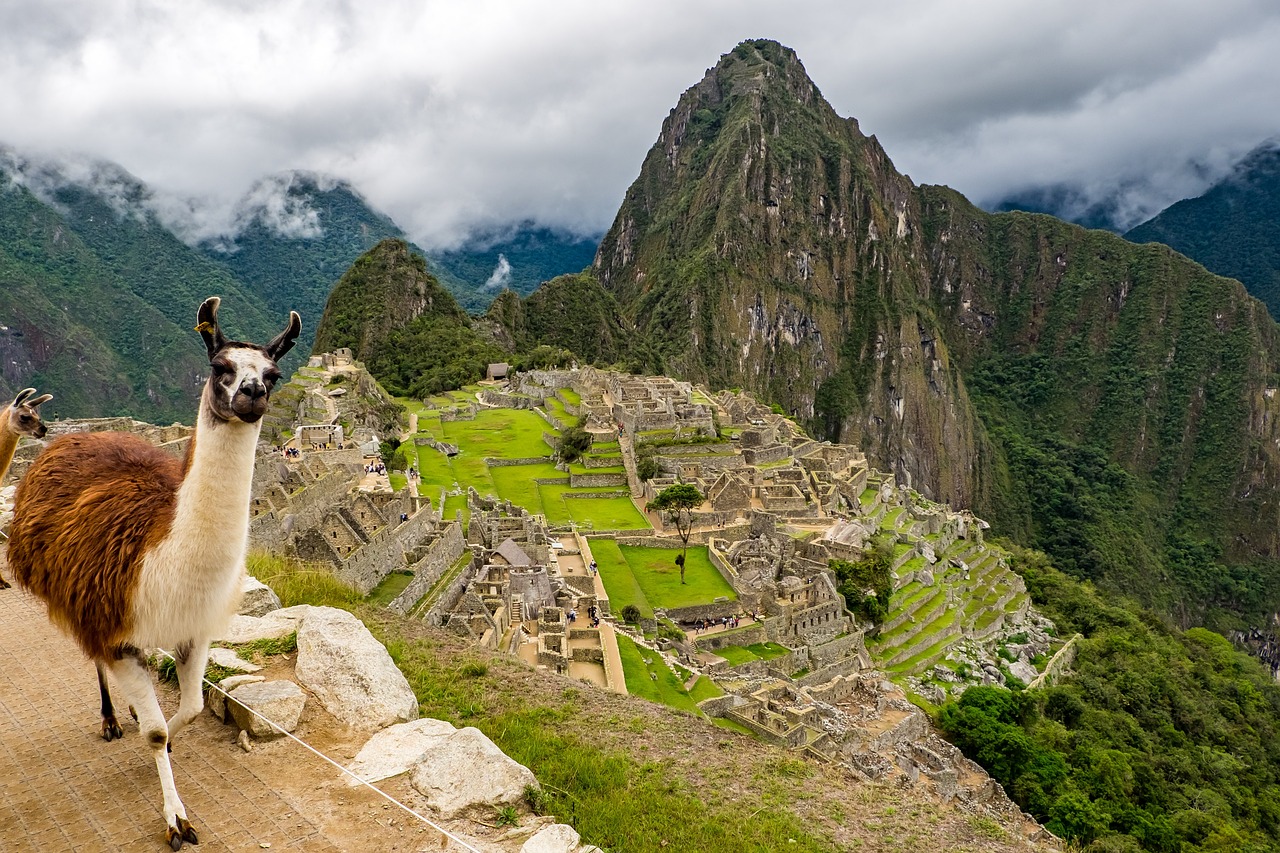
Peru: Hiking the Inca Trail: Machu Picchu Marvels:
As you lace up your hiking boots and prepare for an adventure of a lifetime, imagine following the ancient steps of the Incas through the stunning Andes Mountains to the world-renowned archaeological site of Machu Picchu. This isn’t just any hike; it’s a journey through history, culture, and breathtaking landscapes. Let’s embark on an exhilarating exploration of the Inca Trail, savoring the culinary delights, indulging in vibrant nightlife, and uncovering the historical gems of the region.
The Adventure Begins: A Deeper Dive into the Inca Trail Experience:
For adventure seekers like Sam, a financial analyst who swapped his suit for hiking gear, the allure of the Inca Trail isn’t just in reaching Machu Picchu, but in the journey itself. The trail is a masterclass in endurance and spiritual enrichment, tracing the pathways laid down by the Incas centuries ago.
Preparing for the Trek:
The adventure starts long before the first step is taken. Preparation is key. Prospective hikers must ensure they’re physically fit and acclimated to the altitude. Cusco, often the starting point for many adventurers, sits at over 11,000 feet above sea level. Spending a few days here not only helps with acclimatization but also offers a chance to explore its rich cultural tapestry and cobblestone streets.
The Trail Itself:
The classic Inca Trail route starts at the Km 82 marker and spans four days of walking, covering roughly 26 miles to the gates of Machu Picchu. The path winds through diverse landscapes, from mountain passes to cloud forests filled with orchids and hummingbirds, presenting changing sceneries that captivate the senses.
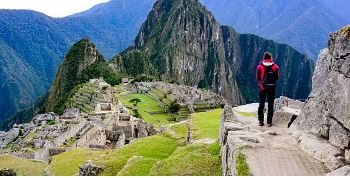
Day one eases hikers into the journey, with a moderate hike to the first campsite. It’s a gentle start that allows trekkers to soak in the vast landscapes of the Andes. Here, the air is pure, and the open skies stretch far beyond the horizon.
Day two presents the most challenging part of the trek: the ascent to Dead Woman’s Pass. At 13,828 feet, it is the highest and most daunting point of the trail. The path is steeply inclined, and each step feels heavier than the last. But the reward at the summit is unparalleled—panoramic views that stretch across a series of green-tinged peaks fading into the clouds. It’s a moment of triumph and a testament to human endurance and spirit.
After conquering the pass, day three offers a reprieve as the trail descends into lush cloud forests, crossing ancient stone stairways and passing small ruins like Phuyupatamarca, the “Town above the Clouds.” This part of the journey offers a mystical experience, with often misty landscapes that make the ruins appear as if they are floating.
Final Steps to Machu Picchu:
The final day starts before dawn, as hikers trek to the Sun Gate to witness the first golden rays of sunlight illuminating Machu Picchu—a moment of pure magic and a culmination of days of physical and mental exertion. As Sam describes, “Seeing the citadel of Machu Picchu through the mist at sunrise, you feel a profound connection to those who walked this path before you.”
This spiritual and transformative journey leaves hikers not just with spectacular photos, but with stories of personal achievement, new friendships forged along rugged paths, and a deeper appreciation of Incan engineering and their harmonious relationship with nature.
Beyond the Physical:
What sets the Inca Trail apart isn’t merely the physical trek but the journey through a living history. Each site along the way offers a glimpse into the past, from the strategically placed watchtowers to the agricultural terraces that showcase the Incas’ advanced understanding of farming and sustainability. Guides enrich the experience, sharing tales of Inca gods and the celestial importance of the landscapes.
For those like Sam, the Inca Trail is more than a hike; it’s a pilgrimage that tests one’s limits and expands their understanding of history and culture. It’s a reminder of the small space we occupy in the world’s vast timeline and the enduring legacy of the civilizations that shaped it.
Culinary Journey: Top 10 Restaurants Near Machu Picchu:
After the physical demands of the Inca Trail, travelers can treat themselves to a culinary journey that is as varied and enriching as the hike itself. Aguas Calientes, the gateway town to Machu Picchu, offers a surprising array of eateries that cater to every palate, combining local Andean ingredients with international culinary techniques. Here’s a deeper look at the top 10 restaurants that are a must-visit for any hungry adventurer.
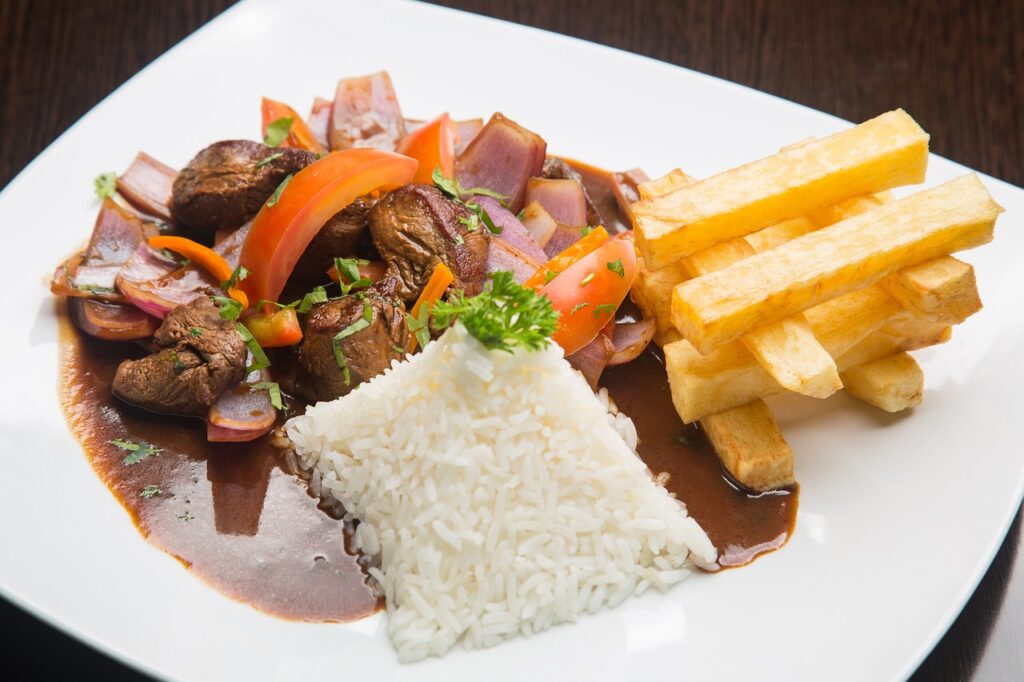
1. Indio Feliz:
This quaint, decor-filled restaurant blends French and Peruvian cuisine, creating a unique dining experience. Owned by a French expat, the menu features dishes like trout ceviche and alpaca steak with a French twist. The quirky interior, adorned with artifacts and paintings, adds to its charm, making it a favorite among tourists and locals alike.
2. Mapacho Craft Beer & Peruvian Cuisine:
Situated right by the train station, Mapacho offers weary travelers great comfort food paired with excellent craft beers brewed on-site. The restaurant’s commitment to local ingredients and Peruvian flavors shines through dishes such as lomo saltado (stir-fried beef) and quinoa burgers.
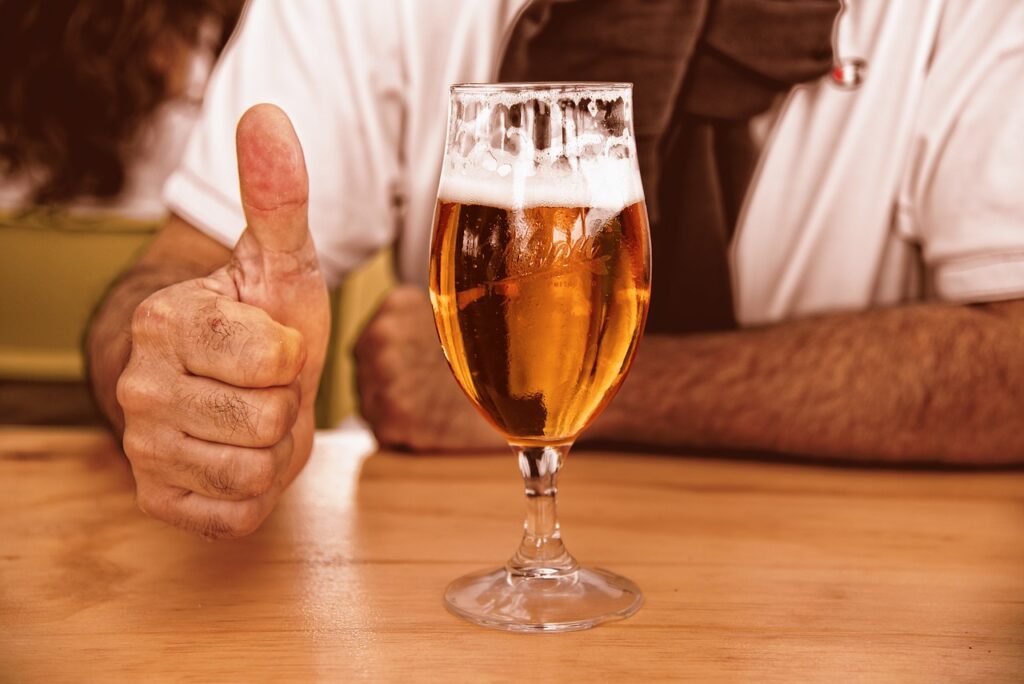
3. La Boulangerie de Paris:
For those missing a taste of Europe, La Boulangerie de Paris offers fresh pastries, strong coffee, and a selection of French bread that could rival any Parisian bakery. It’s a perfect spot for breakfast or a light lunch, especially with their selection of sandwiches and sweet treats.
4. The Tree House:
Offering a romantic dining experience, The Tree House is located up a series of winding stairs and nestled among the branches of a large tree. The view is spectacular, and the menu offers refined dishes like duck confit and passionfruit trout.
5. Qunuq Restaurant:
Located inside the luxurious Sumaq Machu Picchu Hotel, Qunuq offers a gourmet dining experience with panoramic views of the surrounding mountains. The menu features contemporary interpretations of traditional Andean dishes, crafted with ingredients sourced from the Sacred Valley.
6. Toto's House:
Overlooking the Vilcanota River, Toto’s House is perfect for enjoying a meal with a view. Specializing in Peruvian cuisine, the restaurant is famous for its grilled meats and pisco cocktails, providing a vibrant atmosphere that’s ideal for relaxing after a day of trekking.
7. Café Inkaterra:
Nestled within the Inkaterra Machu Picchu Pueblo Hotel, this café offers a serene setting surrounded by lush gardens and the sounds of a nearby stream. The menu focuses on light, sustainable dishes prepared with organic ingredients grown in the hotel’s own gardens.
8. El Indio Feliz Restaurant Bistro:
This is the sister location of Indio Feliz, maintaining the same eclectic charm and fusion cuisine. It’s particularly noted for its relaxed vibe and friendly staff, which make diners feel right at home.
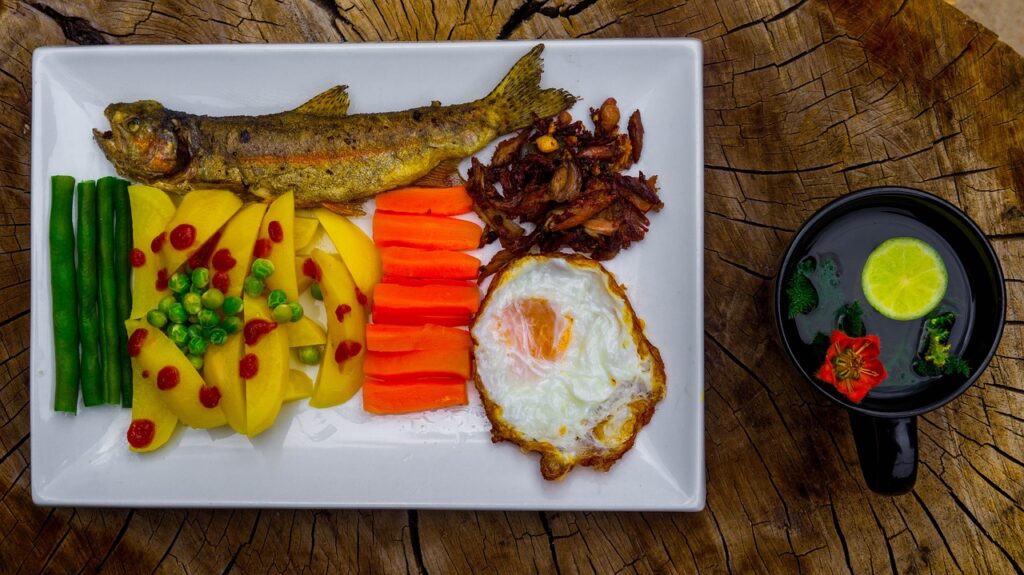
9. Full House Peruvian Cuisine:
Known for its generous portions and lively atmosphere, Full House serves up classic Peruvian dishes with a twist. The ceviche and anticuchos (grilled heart skewers) are local favorites, often accompanied by traditional music and dance performances in the evenings.
10. Govinda:
Catering to vegetarians and those looking for a lighter meal, Govinda offers a range of delicious, meat-free options. From vegetable stews to quinoa salads, the flavors are robust, and the peaceful ambiance provides a refreshing break from the bustling town.
A Culinary Reflection:
The culinary scene in Aguas Calientes mirrors the diversity of its visitors, offering a fusion of global flavors while maintaining a strong connection to Andean culture and cuisine. Dining here isn’t just about nourishment; it’s about experiencing the local and international melding of tastes, a perfect complement to the rich cultural tapestry of the Inca Trail. For many travelers like Sam, these meals serve as both a celebration of their achievements and a deeper exploration into the heart of Peruvian culture.
Top 15 Things to Do Around Machu Picchu:
Beyond the awe-inspiring trek to Machu Picchu, the region offers a wealth of activities that cater to every interest and energy level. From cultural excursions to adrenaline-pumping adventures, here’s a deeper look into the top 15 things to do in this vibrant area.
1. Explore the Sacred Valley's Pisac Market
This colorful market in the heart of the Sacred Valley is a must-visit for anyone interested in local crafts, textiles, jewelry, and traditional Andean products. It’s a fantastic place to interact with local artisans and practice your bargaining skills.
2. Inca Ruins at Ollantaytambo:
Visit this impressive archeological site, known for its giant terraces and ruins that were once the royal estate of Emperor Pachacuti as well as a stronghold during the Spanish conquest.
3. Scenic Train Ride to Machu Picchu:
Take one of the scenic trains (like the Vistadome or the luxurious Belmond Hiram Bingham) that offer breathtaking views of the landscape and a comfortable ride to the base of Machu Picchu.
4. Thermal Baths in Aguas Calientes:
Soak your weary muscles in the hot springs of Aguas Calientes. These natural thermal waters are a perfect relaxation spot after days of hiking.
5. Machu Picchu Museum and Botanical Garden
Learn more about the history of Machu Picchu and the Inca civilization at this museum located near the site. The adjacent botanical garden showcases the rich flora of the region.
6. Bird Watching in the Cloud Forest:
The area around Machu Picchu is a haven for bird enthusiasts, with opportunities to spot rare species like the Andean cock-of-the-rock and various hummingbirds.
7. Local Chocolatier Visit:
Tour a local chocolate factory in Aguas Calientes where you can learn about the chocolate-making process and sample some of the freshest chocolates made from Peruvian cacao.
8. Traditional Pachamanca Meal:
Experience a traditional Andean cooking method known as Pachamanca, where food is cooked underground using heated rocks. It’s a culinary experience that also offers a deep connection to traditional practices.
9. Maras Salt Mines:
Visit the stunningly picturesque salt mines of Maras. This intricate patchwork of deep terraced pools has been mined since Incan times and remains a working cooperative.
10. White Water Rafting on the Urubamba River:
For adventure seekers, the Urubamba River offers thrilling white water rafting opportunities that provide a unique perspective of the Sacred Valley.
11. Weaving Demonstrations in Chinchero:
This small Andean village is famous for its weaving and beautifully dyed textiles. Watching a demonstration here not only supports local artisans but also helps preserve cultural traditions.
12. Colonial Church in Andahuaylillas:
Often referred to as the Sistine Chapel of the Americas, this small church in Andahuaylillas is famed for its stunning interior art and ornate altar.
13. Pottery Classes in a Local Village:
Engage in a pottery class where you can learn about local techniques and create your own souvenirs to take home, a perfect hands-on cultural experience.
14. Lesser-Known Inca Trails:
For those looking for more secluded trails, consider hiking to Choquequirao, another “lost” Incan city that rivals Machu Picchu in grandeur but sees far fewer tourists.
15. Stargazing from an Observatory:
The clear skies in the Sacred Valley are perfect for stargazing. Several lodges and observatories offer evening sessions where you can gaze at the southern constellations.
More Than Just Machu Picchu:
While Machu Picchu is the crown jewel of the region, these activities show that the Sacred Valley and surrounding areas offer much more. Each activity provides a different lens through which to view the rich tapestry of nature and culture in this unique part of the world. Whether you’re soaking in hot springs, rafting through gorges, or learning about ancient cooking techniques, there’s a wealth of experiences waiting to complement your visit to this historic sanctuary.
Family Fun in the Machu Picchu Region:
Exploring the region around Machu Picchu with family can be an enriching and unforgettable experience. The area is not only steeped in history and natural beauty but also offers a variety of activities that are suitable for all ages, making it an ideal destination for families seeking both adventure and cultural immersion.
1. Interactive Workshops and Classes:
Children and adults alike can enjoy participating in interactive workshops such as pottery making or textile weaving. These activities are not only fun but also provide a hands-on way to connect with Andean traditions. Workshops typically take place in local villages where artisans are eager to teach their crafts.
2. Visit to an Alpaca Farm
Visit a nearby alpaca farm, where kids can learn about these endearing creatures that are a vital part of Peruvian culture. Families can feed and interact with the alpacas and learn about the process of shearing, spinning, and weaving their soft wool into garments.
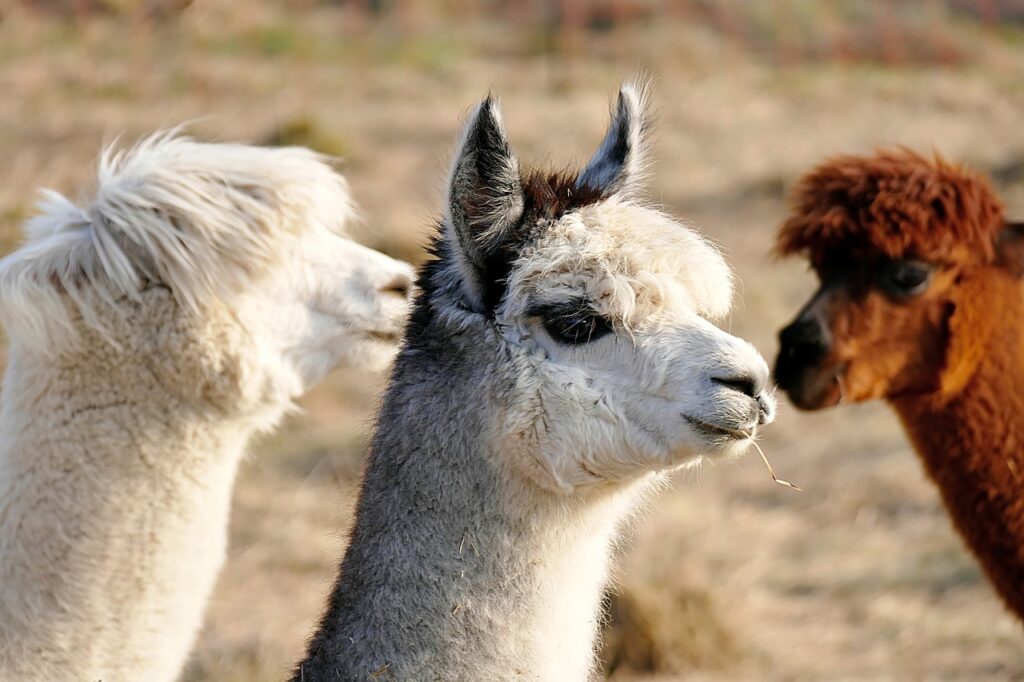
3. Guided Nature Walks:
Explore the biodiversity of the region with guided nature walks tailored to families. These walks are usually less strenuous and can be customized to the pace of younger hikers, focusing on the identification of native plants and animals. Guides often share interesting stories and legends that keep children engaged.
4. Chocolate Making Sessions:
Participate in chocolate making sessions where you can learn about the journey of cacao from bean to bar. Families can make their own chocolate and decorate it with various toppings. This delicious activity is both educational and a sweet treat for everyone.
5. Storytelling Sessions:
Enjoy storytelling sessions that feature local myths and legends, providing a captivating glimpse into the rich cultural tapestry of the Incas. These stories often take place in the evenings at local cafes or community centers, where families can gather to listen and learn together.
6. River Rafting Adventures:
For families with older children, a mild river rafting trip on the Urubamba River can be exhilarating. These trips are designed with safety in mind and are guided by experienced professionals, offering a fun way to experience the natural landscapes of the Sacred Valley.
7. Scavenger Hunts in Historical Sites:
Organized scavenger hunts within some of the less crowded archaeological sites can be a thrilling way for families to explore. These activities encourage kids to observe carefully and learn details about the sites, turning a regular tour into an interactive adventure.
8. Picnics with Views:
Enjoy a family picnic with the stunning Andes mountains as your backdrop. Many local tour operators offer picnic packages that include traditional Peruvian foods, allowing families to relax and enjoy the scenery while sampling local dishes.
9. Cable Car Rides to Remote Ruins:
Take a cable car ride to some of the remote ruins, which is not only less taxing than hiking but also provides spectacular aerial views of the valleys and terraces. This is a particularly good option for families with young children or those who prefer a less strenuous way to reach the sights.
10. Visit to the Butterfly House:
The Mariposario, or Butterfly House, near Machu Picchu is a delightful place for families. It’s an opportunity to see a variety of local butterfly species in a beautiful natural setting, which is both educational and enchanting for visitors of all ages.
A Family-Friendly Destination:
These activities showcase the diversity of family-friendly options available in the Machu Picchu region. Each experience is designed to be accessible and engaging for children, ensuring that families can enjoy a fulfilling and memorable visit. From educational workshops to gentle adventures in nature, there is something to capture the imagination of every family member, making your trip to this historic area a cherished family memory.
Nightlife for Couples in the Machu Picchu Region:
While Machu Picchu and the surrounding areas are known for their breathtaking daytime activities and historical explorations, the nightlife, particularly in Aguas Calientes, offers a vibrant and romantic setting for couples. After a day of adventure, many are surprised to find a lively evening scene that caters to those looking to unwind and enjoy some nighttime fun. Here are some of the best ways for couples to experience the nightlife around Machu Picchu.
1. Cocktail Bars:
Aguas Calientes hosts a variety of cozy bars that specialize in local spirits and cocktails, especially those made with Peru’s famous pisco. Places like Bar de la Puta Madre and El Mapi Bar offer a relaxed yet lively atmosphere where couples can enjoy expertly mixed pisco sours, the national drink of Peru, while soaking up the local ambiance.
2. Fine Dining Under the Stars:
For a romantic evening, several high-end restaurants offer dining experiences under the stars. Restaurants like The Tree House provide not only gourmet meals but also breathtaking views of the illuminated mountain landscapes. Dining outdoors here allows couples to enjoy the fresh mountain air and the beautifully lit surroundings—a perfect backdrop for a memorable evening.
3. Live Music Venues:
Many establishments feature live music ranging from traditional Andean music to more contemporary bands. Listening to live music while sipping cocktails or enjoying a local meal is a great way for couples to immerse themselves in the cultural tapestry of the region.
4. Night Walks and Stargazing:
For the more adventurous couples, night walks around Aguas Calientes can be magical. The less trodden paths offer tranquility and the opportunity to stargaze. The clear skies in the Andes are perfect for catching a glimpse of the Milky Way and other celestial sights, offering a peaceful and romantic setting away from the crowds.
5. Spa and Thermal Baths:
A relaxing way to end the day is by visiting one of the local spas or the thermal baths in Aguas Calientes. Many spas offer couples treatments, including massages and thermal baths, which are incredibly soothing after a day of hiking and exploration. This can be both a rejuvenating and intimate experience.
6. Nightclub Scene:
For couples looking for a more upbeat evening, there are several nightclubs and dance halls where they can dance the night away. These spots typically get lively later in the night and are a fun way to experience the local party scene and interact with both locals and other travelers.
7. Wine and Tapas Bars:
A more laid-back option is visiting one of the wine and tapas bars that dot Aguas Calientes. These venues offer a selection of international and local wines paired with small plates. It’s a great environment for couples to chat, relax, and enjoy the culinary delights of the region in a more intimate setting.
A Night to Remember:
Aguas Calientes might seem like just a stopover on the way to Machu Picchu, but its nightlife offers a different kind of adventure. From relaxing in thermal waters to dancing the night away, the range of nighttime activities ensures that every couple can find something to enjoy, making their visit to this iconic region both exciting and romantic. Whether it’s toasting with pisco sours under the Andean sky or relaxing to the strums of a charango, the evenings here promise to add an enchanting layer to the memories of your trip.
A Brief History of Peru:
Peru is a country with a rich tapestry of cultures, civilizations, and dramatic historical events that span thousands of years. From ancient indigenous groups to the mighty Inca Empire, and from Spanish conquest to struggles for independence and beyond, the history of Peru is both complex and fascinating.
Pre-Columbian Civilizations:
The story of Peru begins long before the famous Inca civilization. The region was home to several ancient cultures, including the Norte Chico civilization, one of the oldest in the world, dating back to 3000 BC. They were known for their monumental architecture, including large earthwork platforms and mounds.
Following the Norte Chico, the Chavín, who thrived from about 900 BC to 200 BC, influenced the region through their religion and art style. Then came the Paracas, noted for their intricate textiles and trepanation skills, and the Nazca, who created the world-renowned Nazca lines—massive geoglyphs etched into the desert, whose purpose remains a mystery but may have been related to astronomy.
The Mochica or Moche civilization (circa 100 AD to 800 AD) on the north coast is famous for its pottery, especially the stirrup spout vessels that often depicted naturalistic human faces and scenes of everyday life.
The Rise of the Inca Empire:
By the 13th century, the Inca began to consolidate power in the Cusco region of the Andes and eventually expanded to form the largest empire in pre-Columbian America. Known as Tawantinsuyu, or the Land of the Four Quarters, the Inca Empire was highly organized with a vast network of roads, sophisticated agricultural terraces, and impressive architectural achievements, including Machu Picchu.
The Inca excelled in integrating the various cultures they conquered through a combination of diplomacy and military force. They implemented a single language, Quechua, and a cohesive religion centered around the worship of the sun god, Inti.
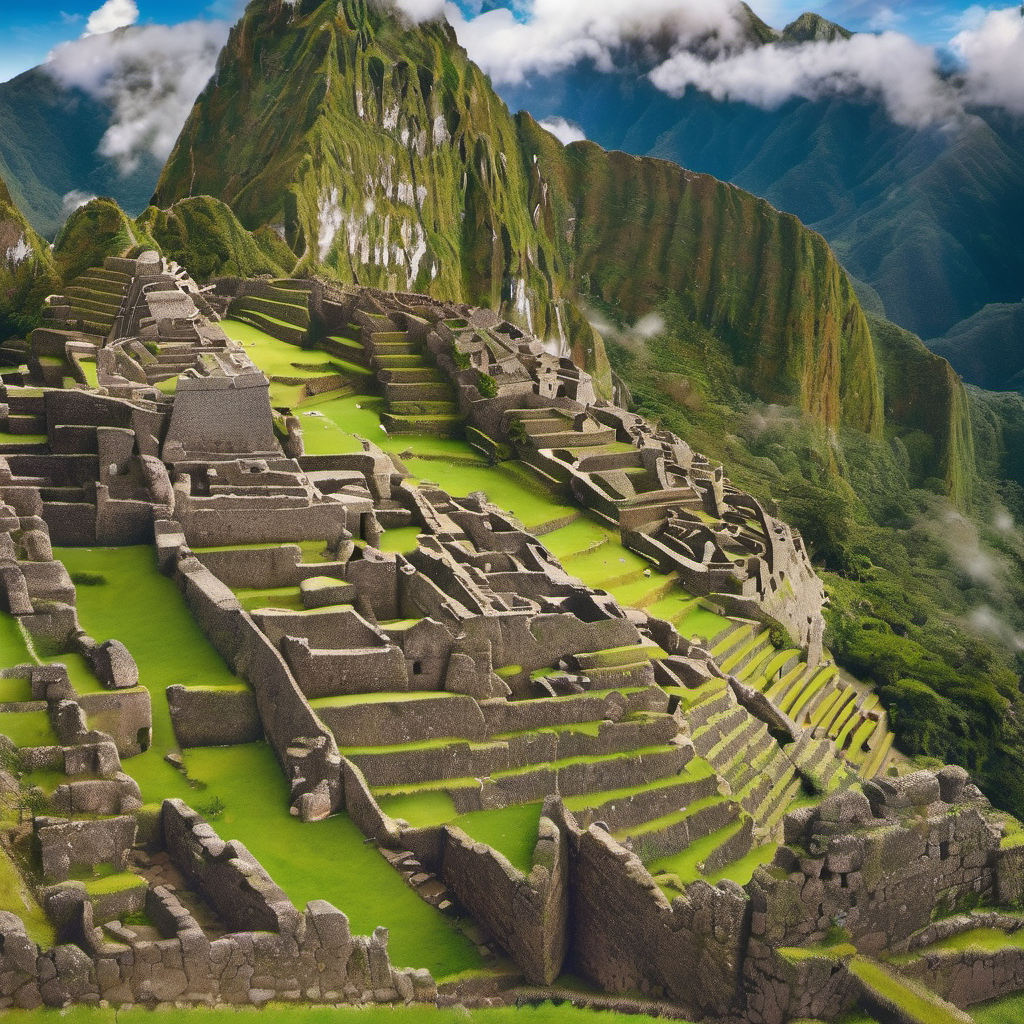
Spanish Conquest and Colonial Period:
The Inca Empire’s expansion was abruptly halted by the Spanish conquest led by Francisco Pizarro in 1532. The capture and execution of the last Inca emperor, Atahualpa, marked the beginning of Spanish rule. The Spanish imposed their culture, religion, and language on the indigenous population, exploiting the rich mineral resources of Peru, particularly silver.
During the colonial period, Lima became the capital and was known as the “City of Kings.” This era was marked by the blending of indigenous and Spanish cultures, though often through oppressive and exploitative mechanisms.
Independence and Republican Era:
Inspired by independence movements across America, José de San Martín of Argentina and Simón Bolívar of Venezuela helped Peru achieve independence from Spain in 1821. However, the newly established nation faced decades of political instability, conflicts, and economic challenges.
20th Century to Present:
The 20th century was a turbulent period for Peru, characterized by military coups, social uprisings, and the emergence of guerrilla groups such as the Shining Path, which led to a period of intense violence and instability during the late 20th century.
In recent decades, Peru has seen significant economic growth and political stabilization. It has developed a vibrant tourism industry centered around its archaeological sites, diverse landscapes, and rich cultural heritage. Modern Peru embraces its multicultural identity, with a significant indigenous population and a mixture of Spanish and native traditions.
Today, Peru is celebrated for its archaeological wonders, thriving arts, and a gastronomic revolution that has put it on the world culinary map. Despite the challenges it has faced, Peru remains a land of profound historical depth and enduring cultural richness.
Wildlife of the Machu Picchu Region:
The Machu Picchu region, set within the lush Peruvian Andes, is not only famous for its archaeological wonders but also for its diverse and abundant wildlife. This area is part of the larger Eastern Cordillera of the Andes range, which is recognized as a hotspot for biodiversity. Here’s a deeper look into the fascinating wildlife you can encounter in this region.
Mammals:
One of the most charismatic mammals found in the Machu Picchu area is the spectacled bear (Tremarctos ornatus), South America’s only bear species. These shy and largely solitary animals are often seen in the cloud forests surrounding Machu Picchu, usually at dawn or dusk. Another notable mammal is the Andean fox (Lycalopex culpaeus), which adapts well to a variety of habitats and is often spotted by visitors.
The region is also home to a variety of smaller mammals like the Andean mountain cat, pumas, and the Peruvian viscacha, a rodent that resembles a chinchilla but is actually related to rabbits. These creatures are more elusive, making sightings a rare and exciting event for wildlife enthusiasts.
Birds:
Birdwatchers will find the Machu Picchu region particularly enthralling. Over 400 species of birds have been documented here, making it a bird watching paradise. Iconic species include the Andean condor, known for its impressive wingspan and symbolic importance in Andean culture. The cock-of-the-rock, with its brilliant red plumage and unique mating dance, is another must-see for visitors.
Hummingbirds thrive in this area due to the abundance of flowers and mild climate. Several species, including the booted racket-tail and the giant hummingbird, the largest in the world, are often seen flitting around the ruins and nearby forests.
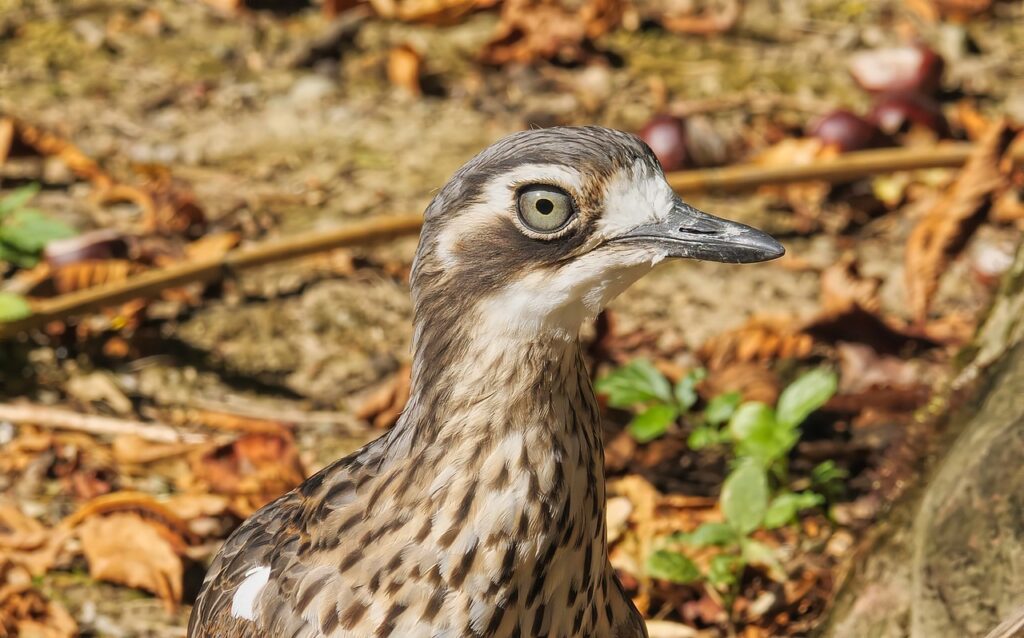
Reptiles and Amphibians:
The warm, moist climate of the lower altitudes around Machu Picchu supports a diverse range of amphibians and reptiles. Colorful frogs like the Andean marsupial frog and various species of tree frogs can be found here. The Andean newt is also common, particularly in the region’s numerous streams and wet areas.
Reptiles such as the Andean lizard and the much rarer Andean pit viper inhabit the region. These species are often more difficult to spot but add to the rich tapestry of biodiversity that makes the area unique.
Insects and Arthropods:
The insect life in the Machu Picchu region is as varied as it is voluminous. Butterflies, in particular, are abundant; the region is home to spectacular varieties such as the blue morpho and various species of swallowtails and satyrs. Moths, beetles, and other insects contribute to a complex ecosystem that supports the larger animals and maintains the health of the local flora.
Conservation Efforts:
The conservation of wildlife in the Machu Picchu region is critical. Efforts are being made to protect these species and their habitats, particularly against threats such as deforestation, mining, and the impacts of climate change. The Machu Picchu Historical Sanctuary not only protects the archaeological sites but also the region’s biodiversity. Education and sustainable tourism practices are also encouraged to minimize human impact on these delicate ecosystems.
The wildlife of the Machu Picchu region adds another layer of awe to the mystical allure of the ancient ruins. For travelers, the opportunity to witness such biodiversity in its natural habitat enhances the magic and mystery of visiting this iconic part of Peru, reminding us of the importance of preserving such unique natural environments for future generations.
Trending Destinations Around Machu Picchu:
While Machu Picchu remains a timeless attraction for travelers around the globe, the region surrounding it is home to other lesser-known but equally fascinating destinations that have begun to capture the interest of the adventurous. These trending spots offer unique insights into the rich history, diverse ecosystems, and vibrant cultures of the Andean region.
1. Vinicunca - Rainbow Mountain:
Vinicunca, more popularly known as Rainbow Mountain, has surged in popularity due to its stunning, naturally multicolored hills. These striking hues are the result of various mineral deposits that have been exposed by erosion. The trek to Rainbow Mountain is a challenging but rewarding day trip from Cusco, providing breathtaking views and a less crowded alternative to the usual trails.
2. Choquequirao:
Often referred to as the ‘sister’ city to Machu Picchu, Choquequirao is for those who want a more rugged and less trodden path. It is only accessible by a demanding two-day hike, which has kept it relatively isolated. The site offers a more intimate glimpse into Inca architecture and history, with many of its areas still covered by the jungle, awaiting further excavation and exploration.
3. Sacred Valley of the Incas:
Though well-known, the Sacred Valley continues to evolve as a trending destination with new attractions and community tourism initiatives. Places like Ollantaytambo and Pisac not only offer remarkable Incan ruins but also host vibrant local markets, cozy cafes, and community-led tourism experiences that allow visitors to engage directly with the rich culture of the Quechua people.
4. Palccoyo - The Alternative Rainbow Mountain:
As Rainbow Mountain gains popularity, Palccoyo begins to emerge as a less challenging and less crowded alternative. It offers similar stunning mineralogical colors with a much easier access route, making it ideal for those who may not be up for the strenuous hike required at Vinicunca.
5. Ausangate Trek:
This high-altitude trek circles Nevado Ausangate, the highest mountain in the Cusco region, and is renowned for its dramatic landscapes that include glacial lakes, rugged mountain passes, and remote traditional villages. It’s gaining traction among trekkers seeking solitude and unspoiled nature.
6. Moray and Maras:
These sites are known for their unique Inca ruins and striking salt pans, respectively. Moray features terraced circular depressions that are believed to have been used for agricultural experiments, while the salt pans of Maras are an ancient system of salt extraction that is still in use today. Both sites provide fantastic photo opportunities and deeper insight into the ingenuity of ancient Andean cultures.
7. Lares Trek:
Offering an alternative to the Inca Trail, the Lares Trek passes through remote Andean communities, providing hikers with the opportunity to experience traditional Quechuan life and stunning landscapes. This trek is becoming popular for those interested in cultural immersion.
8. Salkantay Trek:
As another alternative to the traditional Inca Trail, the Salkantay Trek is gaining fame for its majestic views of the Salkantay mountain, diverse ecosystems, and the opportunity to visit lesser-known ruins and coffee plantations.
Trending with Responsibility:
As these destinations gain popularity, there’s a growing emphasis on sustainable travel practices to ensure that these areas remain pristine and that tourism benefits local communities. Travelers are increasingly encouraged to engage with these sites in ways that respect the natural environment and contribute to the local economies, ensuring that these treasures are preserved for future generations.
Transportation Options in the Machu Picchu Region:
Navigating the Machu Picchu region requires some planning, as the terrain varies from mountainous paths to rural roads, and the remote nature of many destinations means that transportation can be both a logistical challenge and an adventure in itself. Here are the key transportation options available for travelers exploring this historic area.
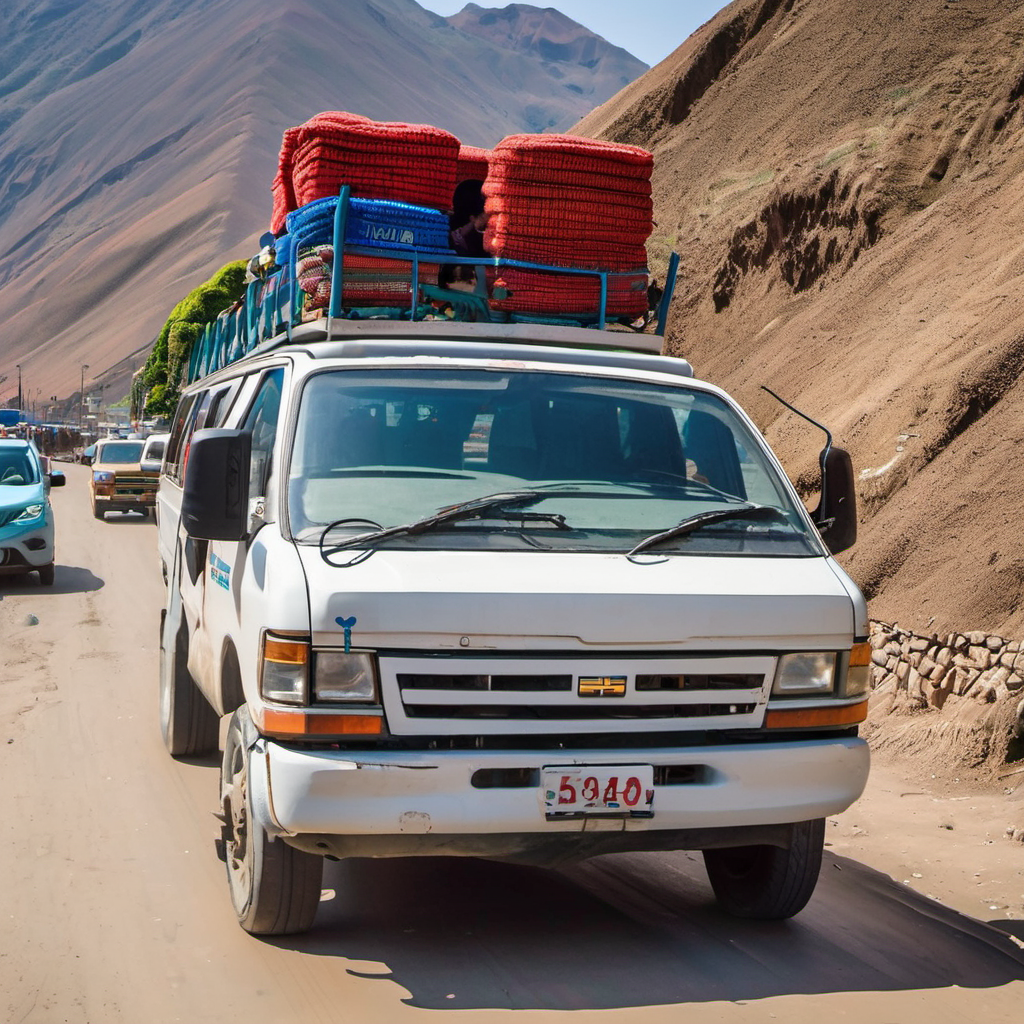
1. Trains:
The train is a popular and scenic way to reach Machu Picchu, especially for those who prefer not to trek. Services such as PeruRail and Inca Rail offer routes from Cusco and Ollantaytambo to Aguas Calientes, the nearest town to Machu Picchu. These trains offer various service levels, from basic to luxury, providing options for different budgets and preferences. The journey itself offers stunning views of the Urubamba River and the surrounding mountains.
2. Buses:
Once in Aguas Calientes, buses are available to shuttle visitors up the winding road to Machu Picchu itself. These buses run frequently throughout the day and are coordinated with train arrivals. For those staying in Aguas Calientes overnight, buses start early in the morning to accommodate those looking to catch the sunrise over the ruins.
3. Taxis and Private Vans:
For more flexibility, taxis and private vans can be hired in Cusco or Ollantaytambo. This option is particularly useful for visiting sites in the Sacred Valley, such as Maras, Moray, or the start of various treks. Private transport allows for custom schedules and stops, making it ideal for those who prefer a personalized experience or are traveling in groups.
4. Rental Cars:
Renting a car is an option for those comfortable with driving in rural and potentially challenging conditions. This offers the ultimate flexibility and the ability to explore remote areas at your own pace. However, travelers should be prepared for narrow roads, varying road conditions, and local driving customs.
5. Trekking:
For many, the classic way to reach Machu Picchu is by trekking, whether it’s the well-known Inca Trail or alternative routes like the Salkantay or Lares treks. These multi-day treks are a major draw for those looking to experience the stunning natural beauty and archaeological sites up close. Trekking requires a good level of fitness and proper preparation, as it involves several days of walking at high altitudes.
6. Colectivos (Shared Vans):
Colectivos are a common and economical way to travel between towns in the Sacred Valley. These shared vans pick up and drop off passengers along a set route and are a popular choice among locals. They offer a more authentic travel experience but may not provide the comfort or reliability of private transportation.
7. Bicycles:
For shorter distances or less challenging terrains, bicycles can be rented in towns like Ollantaytambo. Cycling offers a delightful way to explore the countryside at your own pace, with the freedom to stop at small villages and lesser-known ruins along the way.
8. Horseback Riding:
In areas like the Sacred Valley, horseback riding tours are available and offer a unique way to see the countryside. This can be an excellent option for covering larger areas without the exertion of hiking, providing a mix of adventure and cultural immersion as many rides visit local communities.
The choice of transportation in the Machu Picchu region will largely depend on the individual’s comfort level, budget, and adventure spirit. Each mode of transport offers a different perspective on this rich and varied landscape, enhancing the overall experience of visiting this iconic part of Peru.
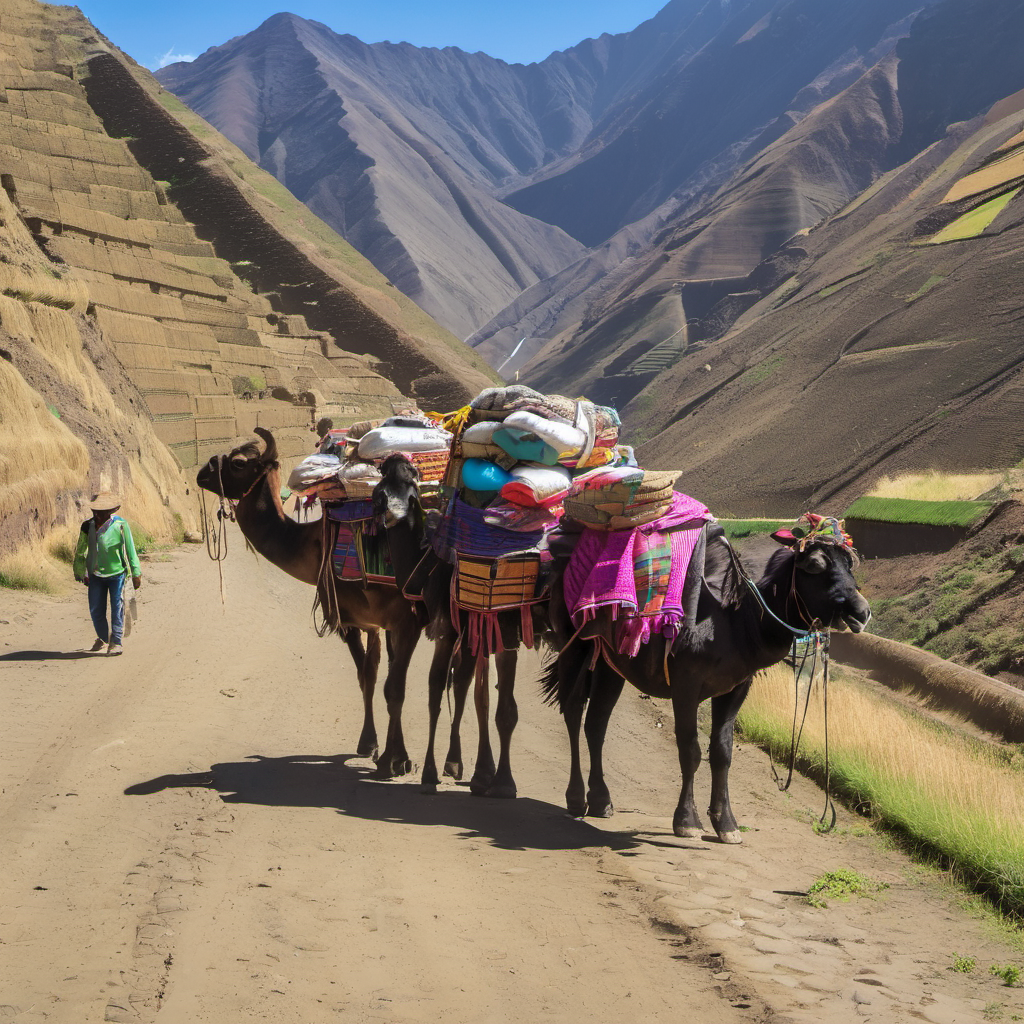
Travel Tips and Awareness for the Machu Picchu Region:
Visiting Machu Picchu and its surrounding areas can be a once-in-a-lifetime experience. However, navigating this historic and rugged terrain requires thoughtful preparation and awareness of local conditions and customs. Here are essential travel tips and points of awareness to ensure a safe, respectful, and enriching visit to this unique destination.
1. Altitude Sickness Prevention:
Many travelers underestimate the impact of high altitude on their health. Machu Picchu itself is located at about 2,430 meters (7,970 feet) above sea level, with Cusco even higher at about 3,400 meters (11,200 feet). To mitigate altitude sickness:
- Acclimatize gradually if possible, spending a few days in Cusco or another high-altitude area before ascending to Machu Picchu.
- Stay hydrated and avoid alcohol and heavy meals.
- Consider medication like acetazolamide if recommended by your doctor.
2. Respect Local Culture and Heritage Sites:
The Machu Picchu region is rich in cultural traditions and historical significance. Respect for local customs and archaeological sites is crucial:
- Always follow guidelines at archaeological sites. Walking off designated paths can damage irreplaceable heritage.
- Dress modestly and behave respectfully when visiting local communities or religious sites.
- Learn a few basic phrases in Spanish or Quechua as a sign of respect to local people.
3. Environmental Considerations:
Preserving the natural beauty and ecological integrity of the Machu Picchu region is a collective responsibility:
- Pack out all trash, especially on trails.
- Use biodegradable products and avoid single-use plastics.
- Stick to marked trails to prevent erosion and protect plant life
4. Travel Insurance:
Ensure you have adequate travel insurance that covers high-altitude trekking, medical evacuation, and unexpected trip cancellations or delays. This region’s remote nature and challenging terrain can lead to unpredictable situations.
5. Weather Preparedness:
The weather in the Andes can be unpredictable, with rapid changes that can catch visitors off guard:
- Always carry waterproof clothing and layers to adapt to changing conditions.
- Check weather forecasts and plan accordingly, especially if trekking.
6. Safety Precautions:
While generally safe, like in any travel destination, it’s important to take basic safety precautions:
- Keep valuables secure and be cautious with possessions, especially in crowded areas like markets or bus stations.
- Use reputable transportation companies and avoid travelling alone at night.
7. Health Precautions:
Beyond altitude sickness, other health precautions are essential:
- Ensure vaccinations are up-to-date, and consider those recommended for travel in Peru, such as yellow fever or typhoid.
- Be cautious with food and water. Drink bottled or treated water and eat in establishments that maintain good hygiene practices.
8. Engage with Local Guides:
Hiring local guides not only enhances your experience through their knowledge of history and culture but also supports the local economy. Guides can provide insights that you would not discover on your own and can enhance your understanding of the sites and their significance.
9. Plan and Book Ahead:
Machu Picchu has visitor limits to protect the site from over-tourism, which means tickets can sell out quickly, especially during peak season:
- Purchase entrance tickets and train tickets well in advance.
- If planning to hike the Inca Trail, note that permits are limited and should be booked several months ahead.
10. Cultural Etiquette:
Understanding and respecting local customs is vital:
- Tip service providers appropriately, as tipping is customary in the tourism industry in Peru.
- Ask permission before taking photographs of people, especially in indigenous communities.
By following these tips and maintaining an awareness of both challenges and cultural norms, travelers can ensure a respectful, enjoyable, and enriching experience in the Machu Picchu region, all while contributing positively to the area and its inhabitants.
Embarking on a journey to the Machu Picchu region is more than just a trip; it’s a profound encounter with history, nature, and vibrant cultures that have persisted through centuries. As you traverse the breathtaking landscapes, from the iconic ruins of Machu Picchu to the lesser-known yet equally mesmerizing sites like Rainbow Mountain and Choquequirao, you will be walking in the footsteps of the Incas and experiencing the living heritage of the Andean communities.
This guide has provided you with a comprehensive look into what makes this region one of the most sought-after destinations in the world. From the thrill of adventure, the culinary delights, family-friendly activities, and romantic escapades, to the historical insights and trending spots that are gaining attention, there’s a richness to this area that caters to every traveler.
Traveling here also requires respect and responsibility. By preparing adequately for the high altitudes, engaging respectfully with local customs, being environmentally conscious, and planning your travel logistics carefully, you not only enrich your own experience but also contribute positively to the sustainability and preservation of this precious region.
Whether you are an avid trekker looking to conquer the rugged trails, a history enthusiast eager to delve into the past, or a traveler seeking to absorb the scenic and cultural beauty, the Machu Picchu region promises adventures that are both exhilarating and enlightening. So pack your bags, prepare your spirit for adventure, and get ready to explore the heart of the Inca empire. Safe travels and unforgettable memories await in the magnificent landscapes of Peru.



